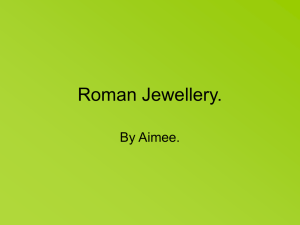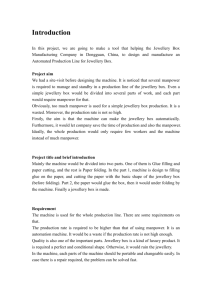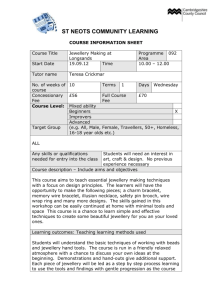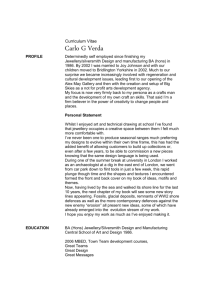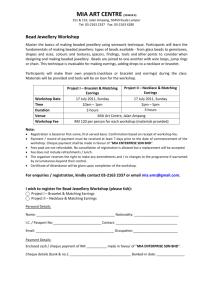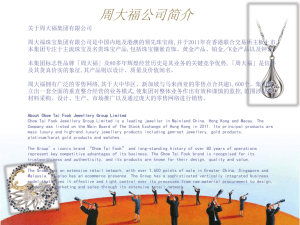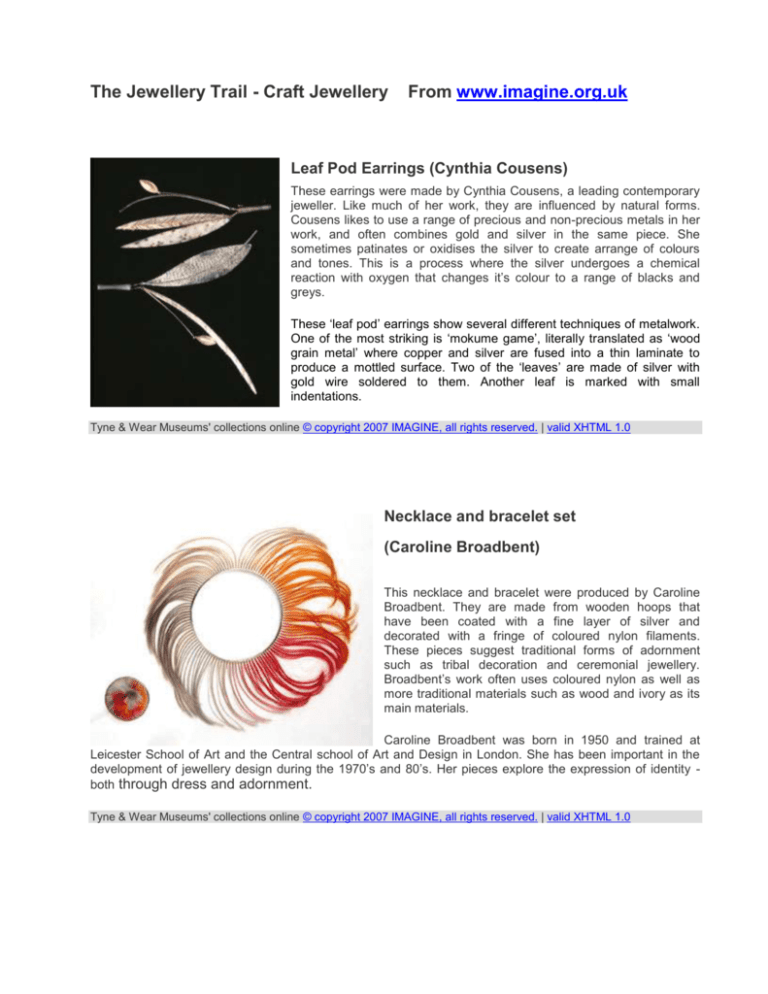
The Jewellery Trail - Craft Jewellery
From www.imagine.org.uk
Leaf Pod Earrings (Cynthia Cousens)
These earrings were made by Cynthia Cousens, a leading contemporary
jeweller. Like much of her work, they are influenced by natural forms.
Cousens likes to use a range of precious and non-precious metals in her
work, and often combines gold and silver in the same piece. She
sometimes patinates or oxidises the silver to create arrange of colours
and tones. This is a process where the silver undergoes a chemical
reaction with oxygen that changes it’s colour to a range of blacks and
greys.
These ‘leaf pod’ earrings show several different techniques of metalwork.
One of the most striking is ‘mokume game’, literally translated as ‘wood
grain metal’ where copper and silver are fused into a thin laminate to
produce a mottled surface. Two of the ‘leaves’ are made of silver with
gold wire soldered to them. Another leaf is marked with small
indentations.
Tyne & Wear Museums' collections online © copyright 2007 IMAGINE, all rights reserved. | valid XHTML 1.0
Necklace and bracelet set
(Caroline Broadbent)
This necklace and bracelet were produced by Caroline
Broadbent. They are made from wooden hoops that
have been coated with a fine layer of silver and
decorated with a fringe of coloured nylon filaments.
These pieces suggest traditional forms of adornment
such as tribal decoration and ceremonial jewellery.
Broadbent’s work often uses coloured nylon as well as
more traditional materials such as wood and ivory as its
main materials.
Caroline Broadbent was born in 1950 and trained at
Leicester School of Art and the Central school of Art and Design in London. She has been important in the
development of jewellery design during the 1970’s and 80’s. Her pieces explore the expression of identity both through dress and adornment.
Tyne & Wear Museums' collections online © copyright 2007 IMAGINE, all rights reserved. | valid XHTML 1.0
Necklace (Geoff Roberts)
This necklace was made by Geoff Roberts, a jeweller born in 1953. He is
well known for producing dramatic, theatrical jewellery in coloured
plastics. His work has a strong sense of fantasy and often suggests
medieval armour.
This necklace was made using a sheet of acrylic, which has been printed
and cut into shapes. These have been heated to fix their shape and then
threaded onto a brass wire. Metallic plastic is a favourite material for
Roberts, and he uses a technique known as heat transfer printing to give
the metallic surface of the acrylic an antique appearance.
Tyne & Wear Museums' collections online © copyright 2007 IMAGINE, all rights reserved. | valid XHTML 1.0
Anodised Aluminium Brooch (Jane Adam)
This brooch was produced by Jane Adam. She studied at Manchester
Polytechnic and the Royal College of Art in London. Adam works
exclusively with anodized aluminium and has been producing jewellery
in this material since she established her London studio in 1985.
Traditionally aluminium is seen as a functional material used in industry
and for making everyday objects like saucepans. However, Adam uses
anodized aluminium to create a range of colourful, decorative objects.
Anodized aluminium can absorb certain dyes and inks. In this brooch,
inks have been printed onto the metal before it is immersed into a dye.
The dye gives the metal a background colour, whilst the inked pattern
resists the dye. The design of this brooch is made from 4 separate layers
of printed, dyed aluminium.
Tyne & Wear Museums' collections online © copyright 2007 IMAGINE, all rights reserved. | valid XHTML 1.0
Steel Brooch (Wendy Ramshaw)
This brooch was made by the internationally reknowned jeweller and
sculptor, Wendy Ramshaw. She was born in Sunderland and trained at
the Newcastle-upon-Tyne school of Art and Industrial Design. Her career
as a professional jeweller began in 1970, and she has gone on to achieve
international acclaim, with exhibitions all over the world. She produces
pieces in a broad range of materials, including ceramics, plastic and
paper. She is also a leading exponent of jewellery made from precious
metals such as gold and silver.
Her work is often characterised by geometric designs. This stainless steel
brooch, like all her work, is handcrafted. It combines different motifs taken
from astrological diagrams and orreries (three dimensional models of the
solar system).
Tyne & Wear Museums' collections online © copyright 2007 IMAGINE, all rights reserved. | valid XHTML 1.0
Plastic bracelet (Peter Chang)
This brightly coloured piece was made by Peter Chang.
Chang was born in 1944, and trained at both Liverpool
School of Art and the Slade School of Art in London. He
is trained in sculpture and jewellery design and has
exhibited work in both Europe and in North America. His
work uses coloured plastics to create very complex
pieces of jewellery. Drawing on patterns in nature, his
most recent work has taken inspiration from marine
animals.
This bracelet has been made from a sheet of recycled
plastic taken from toothbrushes, felt tip pens and
discarded toys. It’s the result of a shift in his work during the 1980s, when Chang began to work on ‘evolving’
a series of pieces that combined jewellery with elements of sculpture.
Select this link to move back to the Jewellery Trail Introduction.
Tyne & Wear Museums' collections online © copyright 2007 IMAGINE, all rights reserved. | valid XHTML 1.0

